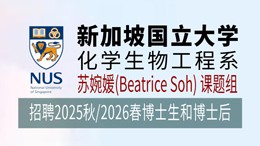Environmental Science and Pollution Research Pub Date : 2024-07-24 , DOI: 10.1007/s11356-024-34437-w Xin Lyu , Mohamed Elchalakani , Xiangyu Wang , Junbo Sun , Bo Huang , Mohamed Saafi , Binrong Zhu , Ziqing Wei , Yufei Wang

|
The research investigates the effects of substituting sand with rubber particles derived from waste tyres—up to 40% by volume—and the inclusion of polypropylene (PP) fibres. Unlike steel fibres, which can cause operational challenges and surface irregularities in the printing process, PP fibres’ flexibility integrates well within the concrete matrix. This integration ensures smooth extrusion and a high-quality surface finish, enhancing the printability of the concrete. The study’s findings reveal that including rubber particles and PP fibres impacts the concrete’s properties, showing a general decline in compressive and flexural strengths as the rubber content increases. Nevertheless, the PP fibre–enhanced mixtures maintain sufficient structural strength, demonstrating an anisotropic compressive strength above 30 MPa and a flexural strength of 4 MPa. These results underscore the feasibility of using rubberised 3D-printed concrete with PP fibres in sustainable construction practices, aligning with standards (ACI 318:2018) and contributing to eco-friendly and innovative construction methodologies.
中文翻译:

掺有 PP 纤维的橡胶 3D 打印混凝土的力学性能和各向异性分析
该研究调查了用取自废轮胎的橡胶颗粒(体积含量高达 40%)代替沙子以及添加聚丙烯 (PP) 纤维的效果。与钢纤维不同,钢纤维可能会在打印过程中造成操作挑战和表面不规则,而聚丙烯纤维的灵活性可以很好地融入混凝土基体中。这种集成确保了平滑的挤出和高质量的表面光洁度,从而增强了混凝土的可印刷性。研究结果表明,橡胶颗粒和聚丙烯纤维会影响混凝土的性能,随着橡胶含量的增加,压缩强度和弯曲强度普遍下降。尽管如此,PP 纤维增强混合物仍保持足够的结构强度,表现出超过 30 MPa 的各向异性压缩强度和 4 MPa 的弯曲强度。这些结果强调了在可持续建筑实践中使用带有 PP 纤维的橡胶 3D 打印混凝土的可行性,符合标准 (ACI 318:2018),并有助于环保和创新的建筑方法。















































 京公网安备 11010802027423号
京公网安备 11010802027423号